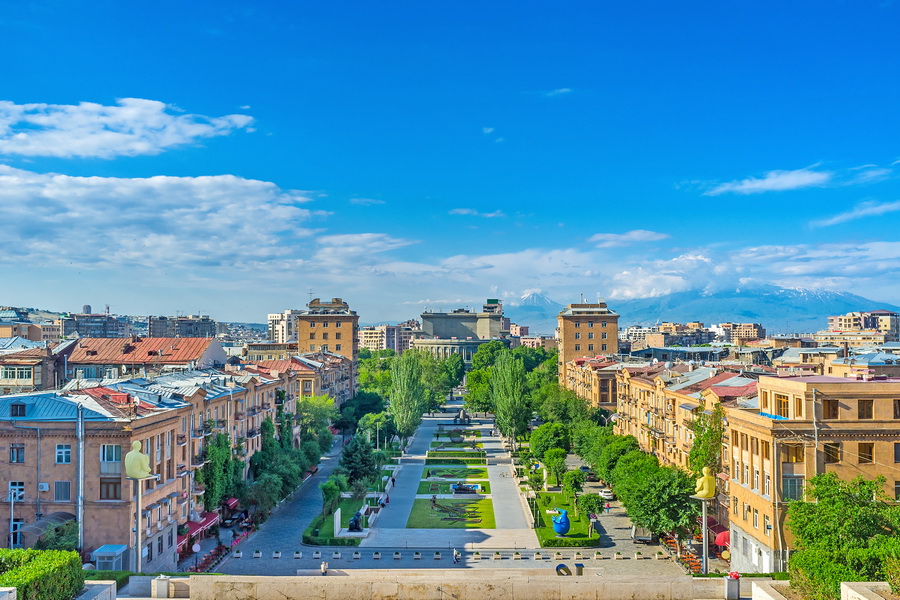
We’ve put together a list of the top 13 things to do in Yerevan – experiences that reveal the most fascinating, beautiful, and meaningful sides of Armenia’s capital. Whether you're curious about Yerevan’s culture, history, or contemporary life, these places will give you a vivid glimpse into this ancient, colorful city. Some are centrally located and easy to reach, while others – true hidden gems – are tucked away off the main tourist trail.
Be ready for a fair bit of walking, as many of these stops involve stair climbs and full-body exploration. Be prepared to rack up 10,000 steps and a few hundred stairs during a full day of exploring. That said, a few spots invite discovery at a slower pace, offering just as much insight without as much effort.
Wondering what to do in Yerevan? Let’s dive in.
The Cascade
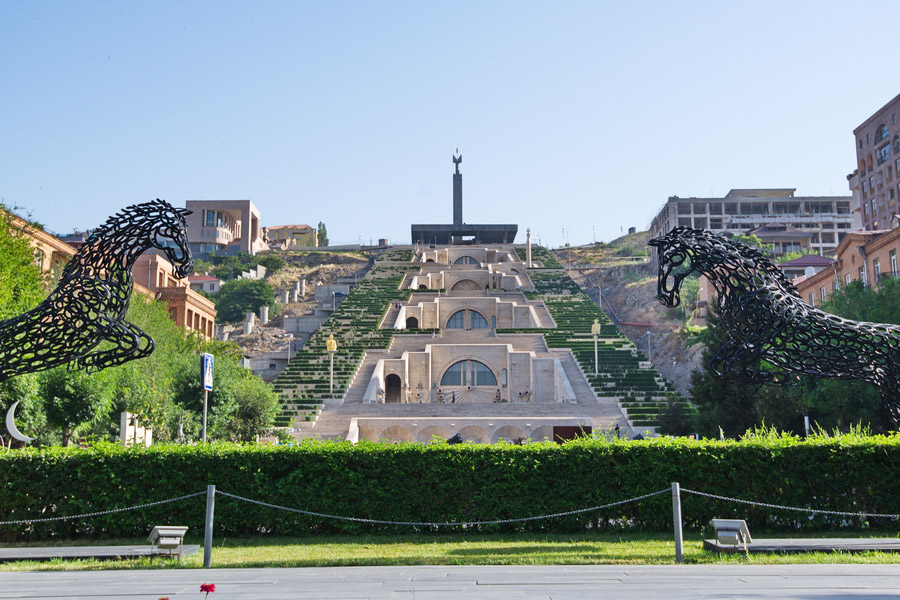
The Cascade is one of Yerevan’s most distinctive landmarks – a massive stair-stepped complex built in the 1970s and still evolving today. With fountains, sculptures, and indoor exhibition halls built into its levels, it’s far more than just a staircase.
At the base, you'll find bold modern sculptures and decorative stonework that make for striking photo backdrops. As you climb, the city unfolds beneath you, and from the top, you can enjoy sweeping views of Yerevan – and even Mount Ararat on a clear day. Whether you’re here for the art, the views, or the architecture, a visit to the Cascade is easily one of the most memorable things to do in Yerevan.
Matenadaran
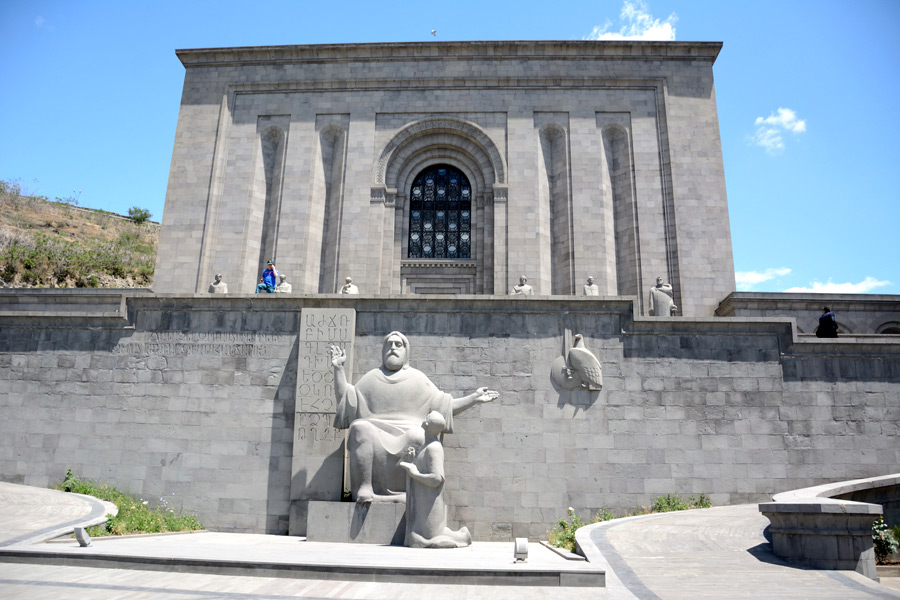
The Matenadaran, Armenia’s national repository of ancient manuscripts, is a striking building just uphill from the Cascade. Designed in the style of 12th-century Armenian architecture, it stands beneath a statue of Mesrop Mashtots, the inventor of the Armenian alphabet. The name itself means “book repository,” and the site functions as both a museum and research institute.
With more than 17,000 manuscripts and 100,000 historical documents, exploring the Matenadaran is easily one of the most fascinating things to do in Yerevan for lovers of history and literature. While most of the texts are in Armenian, the collection also includes rare works in Latin, Arabic, Persian, Hebrew, and Russian – many of them adorned with intricate miniatures and centuries-old marginalia.
Yerevan Brandy Company

The Yerevan Brandy Company is one of the city’s most storied institutions – and for many visitors, touring its atmospheric cellars is among the most distinctive things to do in Yerevan. With a legacy spanning more than 150 years, this legendary facility has changed hands multiple times, achieved the status of a certified brandy producer comparable to French cognac houses, and gathered countless stories involving figures like Stalin and Churchill.
Today, the brandy tradition lives on through two competing factories under one roof: “Ararat” and “Noah,” both hosting regular tastings. Even if you’re not a brandy enthusiast, the experience is immersive. Massive oak barrels, shadowy tunnels, vintage bottles, and tales of secret recipes create a setting that captivates even non-drinkers.
Erebuni Fortress and Museum
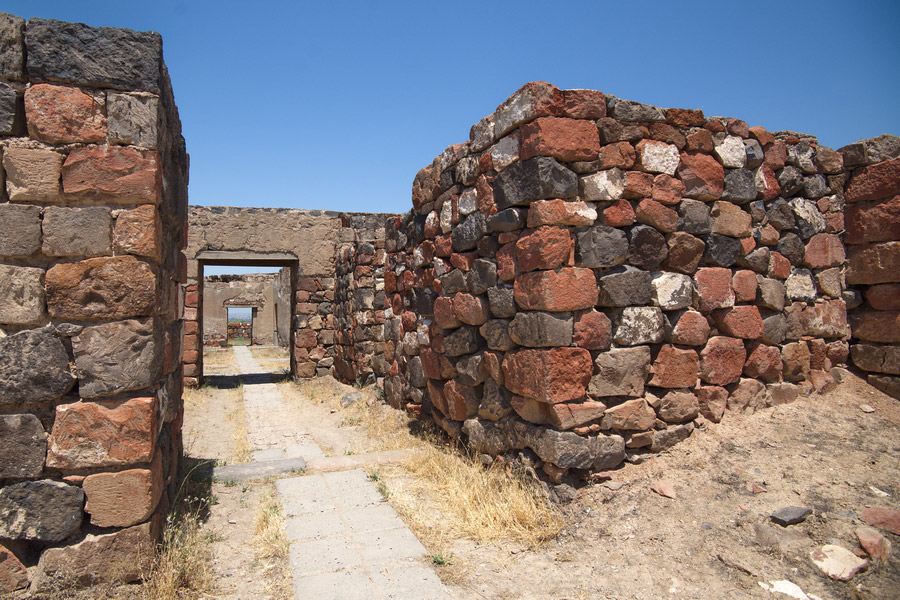
Erebuni and Yerevan are deeply connected – the fortress on Arin-Berd hill, founded in 782 BC, is considered the birthplace of Armenia’s capital. Remarkably, its existence remained unknown until the 20th century. Only in the mid-1900s were its stone walls uncovered, sparking excavations that confirmed Yerevan’s history stretches back nearly 2,800 years. Today, much of the fortress has been reconstructed, and the climb to the top rewards visitors with sweeping views over the city.
At the base of the hill stands the Erebuni Museum, opened in 1968 and home to over 1,500 artifacts unearthed during the original digs. Among the displays are stones inscribed with cuneiform, ancient weapons and armor, household objects, and intricately crafted jewelry. For archaeology enthusiasts and history buffs, Erebuni is one of Yerevan’s most meaningful heritage sites – a window into the city’s ancient past.
Republic Square
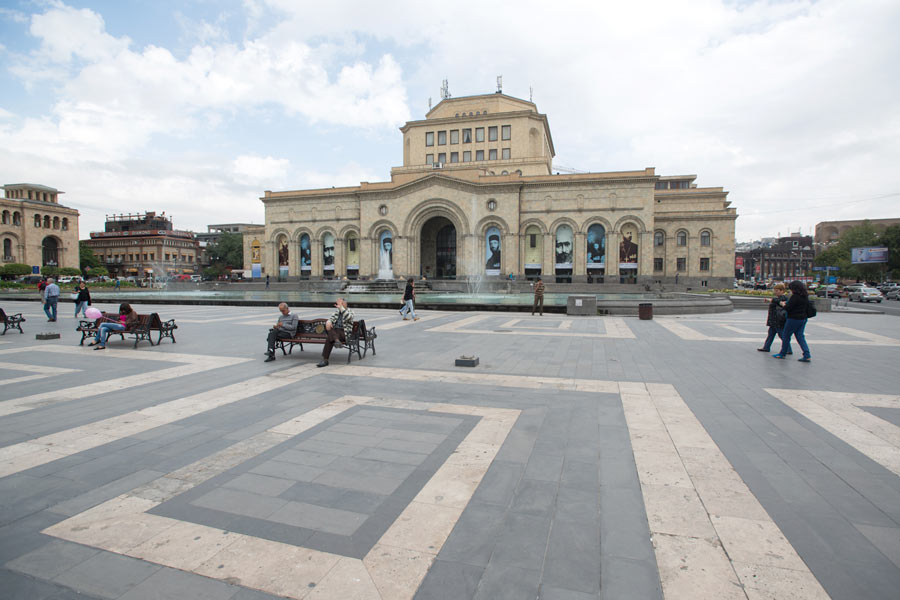
Republic Square is the heart of Yerevan – a place where the city’s rhythms, architecture, and history come together. On weekdays, it functions as a large roundabout, sending traffic in all directions. But on holidays and festivals, the square transforms: streets are closed, stages rise, and crowds gather to celebrate under the open sky.
Framed by grand buildings like the Government House, the Ministry and Communications Buildings, the Marriott Armenia Hotel, and the History Museum of Armenia, the square offers a visual showcase of 20th-century Armenian architecture. In the evening, fountains in front of the museum come alive with lights, adding a theatrical touch to the space.
David of Sasun
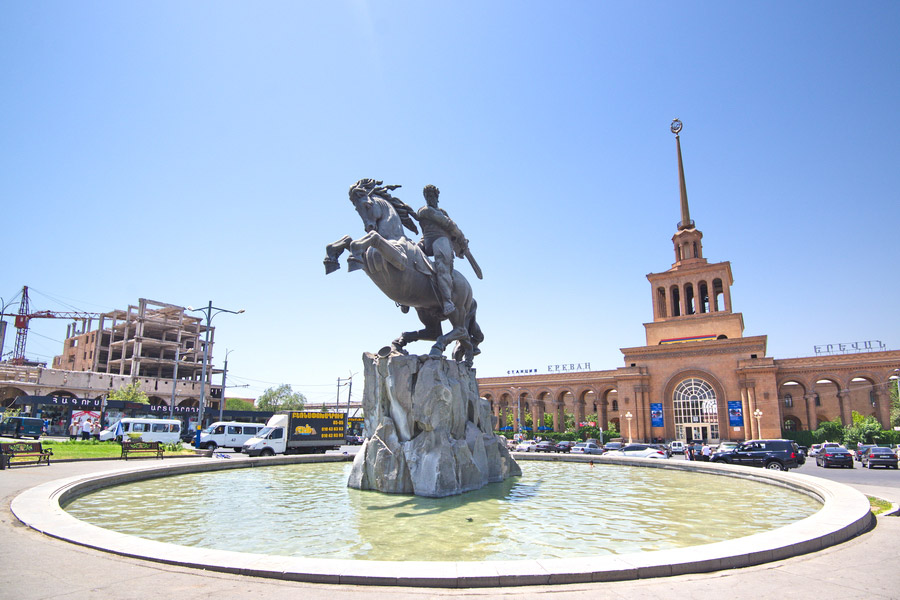
For those arriving in Yerevan by train, the first thing you'll see is the striking statue of David of Sasun in the station square. This dynamic monument captures the courage and determination of the Armenian people to defend their homeland. David of Sasun, the legendary hero of the Armenian national epic, stands as a symbol of strength and independence.
The statue is an impressive 12.5 meters tall, with David astride his mythical horse, Jalali. Beneath the horse’s hooves lies an overturned bowl, a symbol of the Armenian people’s enduring patience. Towering and expressive, the statue is one of the capital’s most recognizable monuments – a powerful first impression for those just arriving.
Tsitsernakaberd
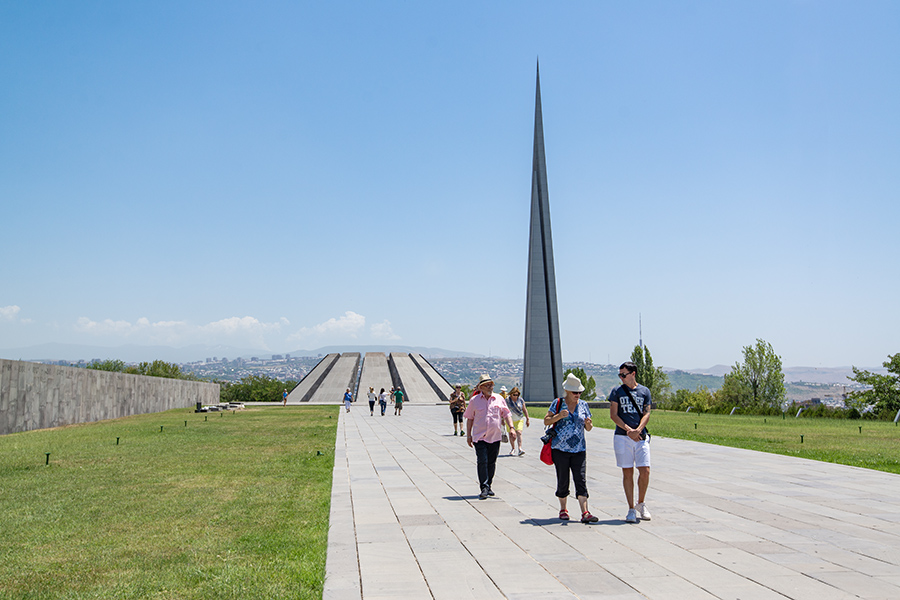
Tsitsernakaberd is Yerevan’s memorial to the victims of the 1915 Armenian Genocide – a place of remembrance and national mourning. Built in 1967 on Tsitsernakaberd Hill, the complex includes a 40-meter split obelisk, a circular mausoleum with an eternal flame, and a commemorative wall lining a quiet memory alley.
Each year on April 24th, thousands gather here to honor the lives lost during one of the darkest periods in Armenian history. The atmosphere is solemn, reflective, and deeply moving.
While it stands apart from the city’s livelier landmarks, visiting Tsitsernakaberd is one of the most meaningful things to do in Yerevan – not for what you see, but for what it asks you to remember. From the hilltop, the view stretches across the city, quietly framing the present against the weight of the past.
Sergei Parajanov Museum
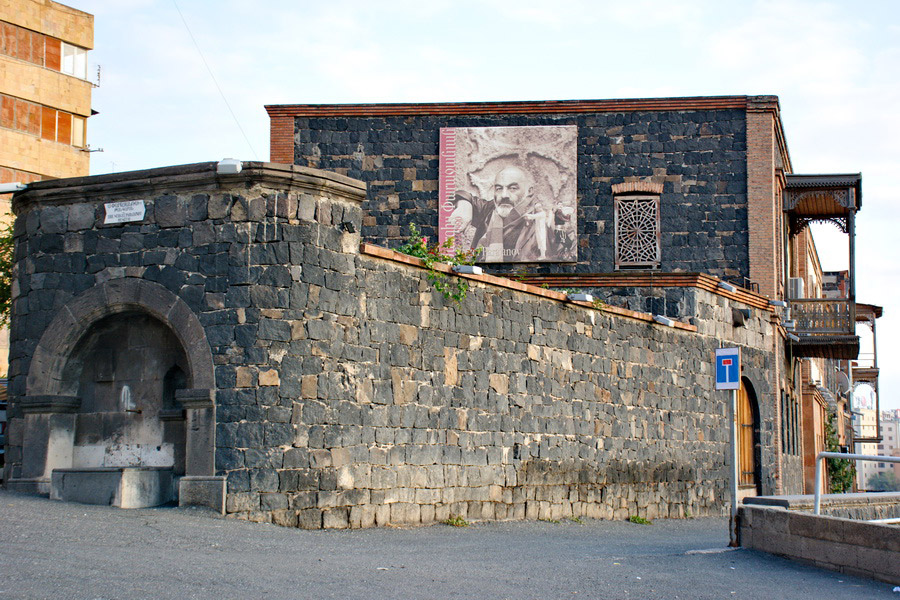
Sergei Parajanov, one of the 20th century’s most original filmmakers, developed a unique visual language that didn’t always align with Soviet expectations – and often came at a personal cost. Though he spent much of his life outside Armenia, he returned briefly to create his masterpiece, The Color of Pomegranates.
After his death, and in accordance with his wishes, a museum was opened in Yerevan in 1991. Housed in a traditional building with views over the Hrazdan Gorge, the museum features Parajanov’s drawings, collages, sculptures, personal items, and correspondence – all reflecting his inventive, nonconformist spirit.
For those seeking culturally rich things to do in Yerevan, the Parajanov Museum offers a quiet, thought-provoking space unlike anywhere else in the city.
Armenian National Opera and Ballet Theater
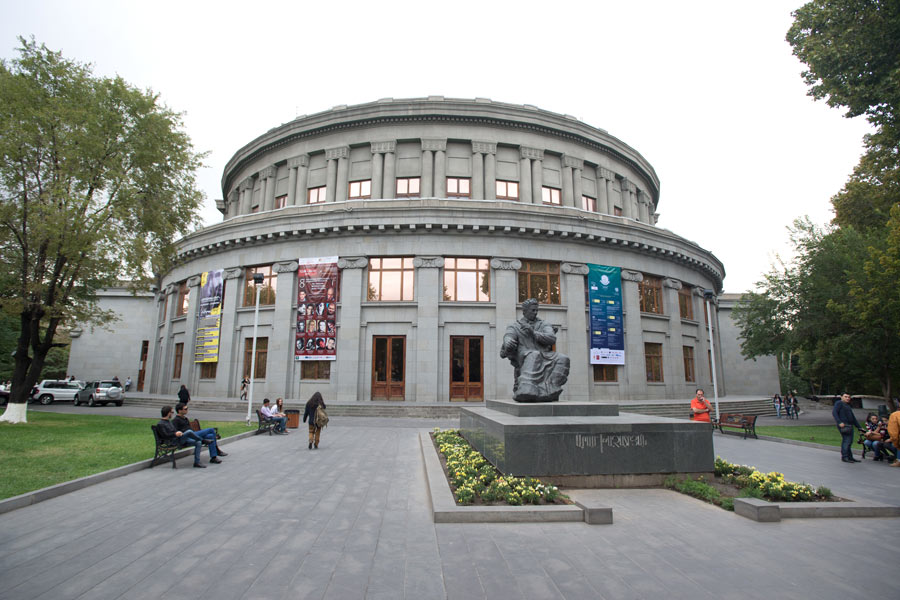
Often called the cultural heartbeat of Yerevan, the Armenian National Opera and Ballet Theater has played a central role in the city’s artistic life since its founding in 1932. The current building, completed in 1940 by architect Alexander Tamanian, is notable for its curved façade and sweeping layout – a design that earned a Grand Prix at an architectural exhibition in Paris.
Inside, two large auditoriums accommodate more than a thousand guests each and are known for their exceptional acoustics. For travelers interested in music, performance, or architecture, attending a show here is one of the most rewarding things to do in Yerevan. Located in the city center near the Cascade, the theater hosts regular premieres and seasonal performances – it’s worth booking tickets in advance if you're hoping to attend.
Vernissage Market
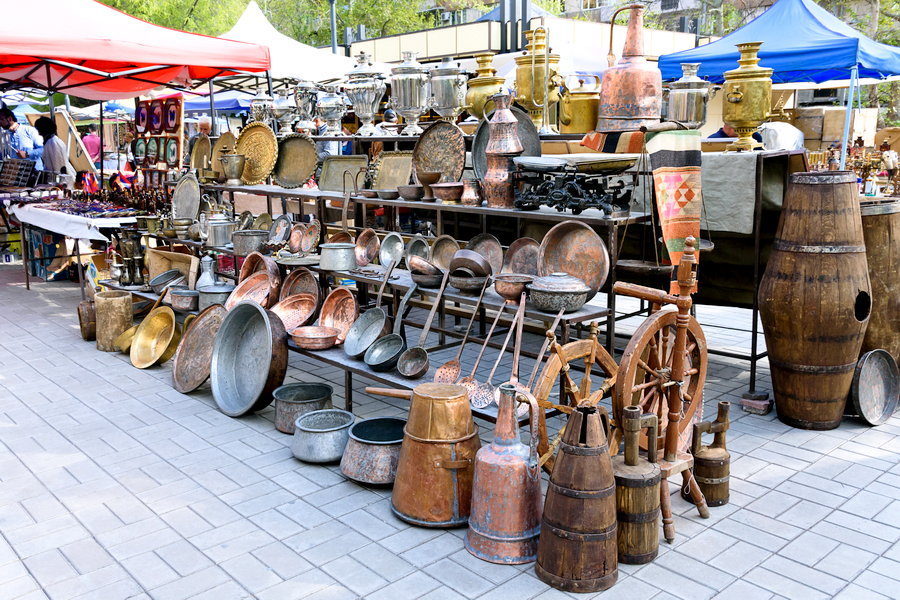
At first glance, Vernissage may seem like a typical flea market – but spend a little time here, and you’ll uncover a fascinating blend of craftsmanship, nostalgia, and cultural curiosity. Just a few minutes' walk from Republic Square, it’s the kind of place that rewards slow exploration rather than a quick browse.
The market stretches with stalls offering hand-carved backgammon sets, jewelry boxes, musical instruments, handmade dolls, and intricate woodwork. Vintage collectors will appreciate the variety of Soviet-era items: cameras, gramophones, medals, crystal glassware, and porcelain sets, all tucked between rarities and curiosities.
If you're the type of traveler who enjoys local markets, hidden finds, or vintage flair, wandering Vernissage is one of the most enjoyable things to do in Yerevan, especially on a sunny weekend afternoon.
The experiences above reflect some of the best things to do in Yerevan, but there’s even more waiting just beyond the city center. In the next section, we’ll highlight a few memorable places on the outskirts – destinations that offer a quieter, often unexpected perspective on the capital.
Echmiadzin Cathedral

Echmiadzin, located about 20 kilometers west of Yerevan, is the spiritual heart of Armenia and the seat of the Armenian Apostolic Church. It is considered the most sacred site for Armenians around the world.
In 301 AD, when Armenia became the first nation to adopt Christianity as a state religion, the original Echmiadzin Cathedral was founded here. Over the centuries, additional churches were built around it, forming a religious complex that evolved gradually over the course of a thousand years. Today, it remains an important pilgrimage site and a powerful symbol of Armenian identity and Christian heritage.
Zvartnots
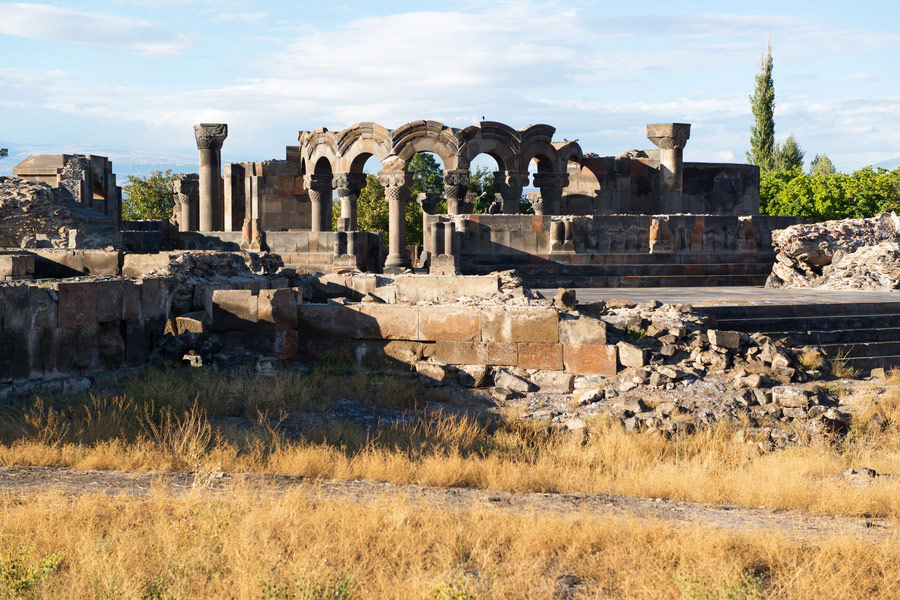
Zvartnots is the site of a once-magnificent cathedral, now in ruins, located just 5 kilometers from Echmiadzin. Built in the mid-7th century, the temple was destroyed by a powerful earthquake in the 10th century and never rebuilt.
What remains today are fragments of towering columns and carved stone foundations that still convey a sense of grandeur. The intricate reliefs and ornamentation reveal the skill and artistry of early medieval Armenian masons, making Zvartnots a compelling stop for those interested in ancient architecture and sacred history.
Levon’s Underground
Exploring Levon’s Underground is one of the more unusual things to do near Yerevan – a hand-carved subterranean maze created by a single man over more than two decades. Located just 8 kilometers from the city center, this remarkable site began as a modest attempt to dig a potato cellar.
At his wife’s request, Levon Tosi started excavating beneath their home, but the project quickly took on a life of its own. Over 23 years, he carved out a network of narrow corridors, staircases, and rooms totaling 300 square meters and reaching a depth of 21 meters – accessed by an 80-step descent. The result is a surreal, atmospheric space that blurs the line between art, devotion, and obsession.

